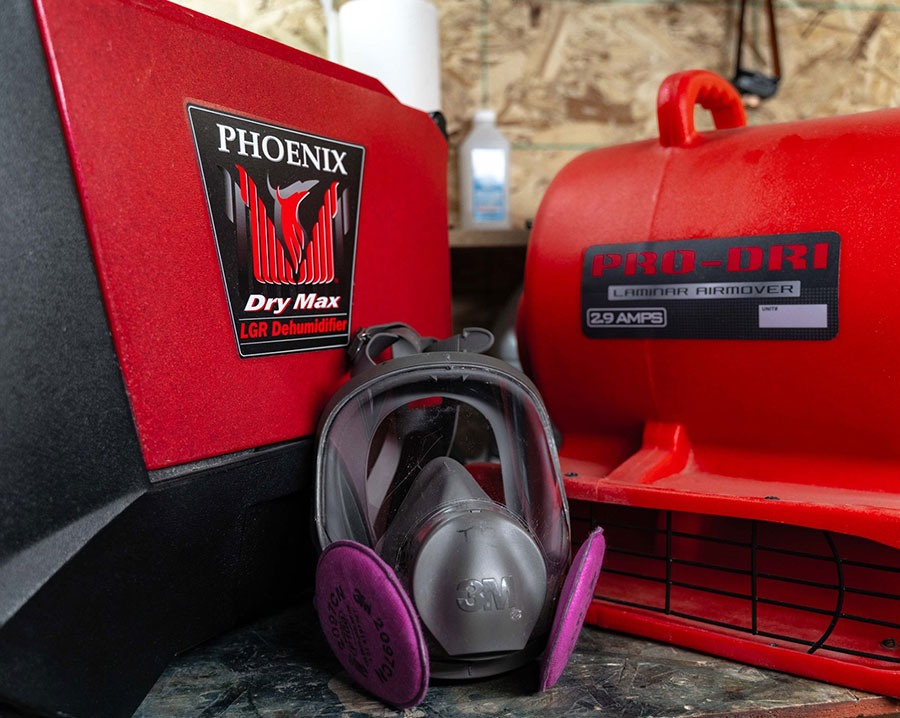Imagine your carpet was underwater all night. The idea of fixing water damage can seem overwhelming, especially when you worry about mold and mildew. When water touches your carpet, it starts a chain of problems. These include health risks and structural issues. But can you fix the carpet, or do you need to replace it? It’s important to know about the carpet repair process before deciding.
Key Takeaways
- Quick action on water damage can stop mold and bacteria from growing.
- Whether to repair or replace depends on the water type, how long it was there, and the carpet’s condition.
- Experts in water damage restoration have skills that home fixes might not match.
- Stopping mold and mildew is key for a healthy home.
- Learning about carpet repair can help you make the right choice for your water-damaged carpet.
Understanding Water Damage in Carpets
Water damage to carpets often comes from overflowing toilets, faulty appliances, or flooding. It’s key to assess the damage to know how much and what kind of water is involved. Different types of water damage need different fixes, so knowing them is important for effective cleaning.
The type of water affects how to clean it up. Clean water is from things like burst pipes or rain. Greywater is a bit dirty, from things like dishwashers. Blackwater is the worst, from sewage or river flooding. Knowing the water type helps decide the best way to fix the carpet.
Even carpets with treatments can get too damaged to save. Some types of water damage mean you might need to replace the carpet. It’s important to quickly figure out the damage to know what to do next. This could be cleaning, drying, fixing, or replacing the carpet. Knowing about different types of water damage helps homeowners make the right choices to fix their carpets.
When to Replace Water-Damaged Carpets
Deciding when to replace a water-damaged carpet depends on several factors. These include the amount of water, how long the carpet stayed wet, and the type of water it faced. Carpets soaked by clean water might be saved if dried quickly. But those hit by grey or black water usually need to be replaced right away.
If water stays on a carpet too long, mold and mildew can grow. This can cause health problems and damage your home. If the water came from sewage or floodwaters, you should replace the carpet right away to protect your health.
The age and condition of the carpet also matter when deciding to replace it. Older, worn-out carpets are often too far gone to fix. They might not be worth the cost to clean. To prevent mold and keep your home healthy, it’s best to replace carpets that are badly damaged or contaminated.
Health Risks of Water-Damaged Carpets
Water-damaged carpets are not just unsightly; they are also harmful to your health. They become perfect places for mold and bacteria to grow when they stay damp. This can cause breathing problems, like wheezing, a stuffy nose, and itchy skin.
People with asthma, allergies, or weak immune systems are at higher risk. In bad cases, health problems from mold can get worse. For kids, mold exposure early on can harm their breathing health later on.
The Centers for Disease Control and Prevention (CDC) advise acting fast to stop mold or bacteria growth. It’s important to know that any mold can be harmful to your health.
Steps to Fix Water-Damaged Carpets
Fixing water-damaged carpets needs a careful plan to remove all moisture and lessen damage. Here’s a step-by-step guide to follow:
- Stop the Source of Water Entry: First, stop the water from coming in. This might mean turning off the main water supply or fixing leaks.
- Document the Damage: Take clear photos and notes of the water damage. This will help with insurance claims.
- Inspect the Area: Look over the area carefully to see how bad the damage is. Check the carpet, padding, and what’s under the floor.
- Water Extraction: Use special equipment like vacuums to get rid of as much water as you can. This step is key in fixing water damage.
- Dehumidifying: Set up dehumidifiers and fans to help dry the carpet and the area around it. This stops mold from growing.
- Thorough Cleaning: Clean the affected areas with the right cleaners and disinfectants. This removes any bad stuff the water brought in.
- Restoration: If the damage is severe, you might need to tear out damaged parts and fix the structure. Experts in fixing water damage make sure everything is fully restored, including stopping mold.
Following these steps helps homeowners deal with water-damaged carpets and make their homes safe and livable again.
Can you fix water damaged carpet?
When dealing with water-damaged carpets, many wonder if they should fix it themselves or call professionals. It’s important to know the risks of DIY fixes. Not removing all the water can lead to mold and mildew, which are bad for your health.
Homeowners often think about fixing vs. replacing carpet. Trying to fix it yourself might not work, and you might end up needing a new carpet too soon. This costs more money and makes your home less safe and comfy.
Choosing professional carpet cleaning services is a better option. They have the right tools and know-how to fix water damage. This keeps your carpet in good shape and safe for a longer time. Plus, they can handle health risks, giving you peace of mind.
In short, while saving money with DIY carpet restoration might tempt some, the risks and health concerns make professional help a better choice for fixing water-damaged carpets.
Professional vs. DIY Water Damage Restoration
When dealing with water-damaged carpets, property owners often wonder if they should hire professionals or try to fix it themselves. Each option has its own pros and cons that need to be thought over.
Professional water damage services offer a full solution. They have the right tools and knowledge to handle water removal, drying, and cleaning. They can spot and fix hidden problems like mold or structural damage, which can save money on future repairs. For big jobs like blackwater damage or major structural issues, pros are safer and more thorough than DIY.
Going the DIY route might seem cheaper at first. But, homeowners should know the risks of doing it themselves. Not doing water removal or drying right can lead to more moisture, mold, and damage to the carpet and building. This can end up costing more money and be bad for health because of mold and bacteria.
So, deciding between hiring experts or doing it yourself depends on how bad the damage is and the risks involved. It’s important to think about the costs now and the benefits later to keep your property and family safe.
Conclusion
When dealing with water-damaged carpets, deciding to repair or replace depends on the damage type and extent. Carpets with minor water damage might be saved with quick action, like removing water and drying them out. But, carpets hit by floodwater, especially dirty water, usually need to be replaced to avoid health risks and ensure safety.
Choosing how to fix water damage should be done carefully. Experts in restoration have the skills to handle mold and remove hidden moisture. They know how to stop mold and prevent damage from water that’s not dried out fast. This means carpets and the buildings they’re in stay dry and clean, keeping people safe from health problems and structural issues.
Acting fast is key when dealing with flood damage. Using fans and dehumidifiers helps in the first steps of fixing water damage. But, if you’re unsure, it’s best to get help from experts. They can make sure everything is fully fixed and done right, protecting your health and property from the bad effects of not fixing water damage correctly.




















